The renovated tour route of the Park of the Tombs of Virgil and Leopardi in Naples was inaugurated today in the presence of Culture Minister Alessandro Giuli. The inauguration was attended, among others, by Director General of the Museums Massimo Osanna, Councillor for Infrastructure, Mobility and Civil Protection of the City of Naples Edoardo Cosenza - representing Mayor Gaetano Manfredi - and Luana Toniolo, Deputy Director of the Campania Regional Directorate of National Museums.
During the ceremony, writer and playwright Valeria Parrella and actor and director Gabriele Lavia read verses by the two celebrated poets, giving those present an intensely evocative moment, capable of evoking the deep connection between poetry, memory and landscape that characterizes the site.
A central element of the park is the opus reticulatum mausoleum, dating from the first decades of the imperial age and traditionally believed to be the burial place of Virgil. Although the attribution is not grounded in archaeological evidence, the belief has been consolidated over the centuries, until it was made official in 1930 by Superintendent Amedeo Maiuri. It was Maiuri himself who shaped the park and opened it to the public, envisioning it as a romantic garden where landscape, archaeology, memory, and urban decorum were harmoniously blended.
In 1939, the park also welcomed the remains of Giacomo Leopardi, moved from the church of San Vitale in Fuorigrotta. Today, both poets are commemorated with dedicated epigraphs bearing verses from their works, chosen in harmony with the emotional and landscape context of the site.
The site is also home to other elements of great historical significance, such as the eastern entrance to the Crypta Neapolitana, a gallery from the Augustan period carved out of the rock probably built to a design by Lucius Cocceius Aucto, and a section of the aqueduct, also dating from the same period.
Since ancient times, Virgil has been an object of deep veneration. Pliny the Younger relates that as early as a century after his death, Silio Italicus visited his tomb annually to pay his respects. It was, however, in the Middle Ages that the tomb was identified at the present site, becoming a favorite destination for literary pilgrimages: among the famous visitors were Petrarch in 1343, and - according to tradition - also Boccaccio and Cino da Pistoia. Beginning in the 12th century, the legendary image of Virgil as the magician protector of Naples also took hold. It is said that, during the Norman conquest, his remains were hidden in Castel dell’Ovo to protect them from desecration.
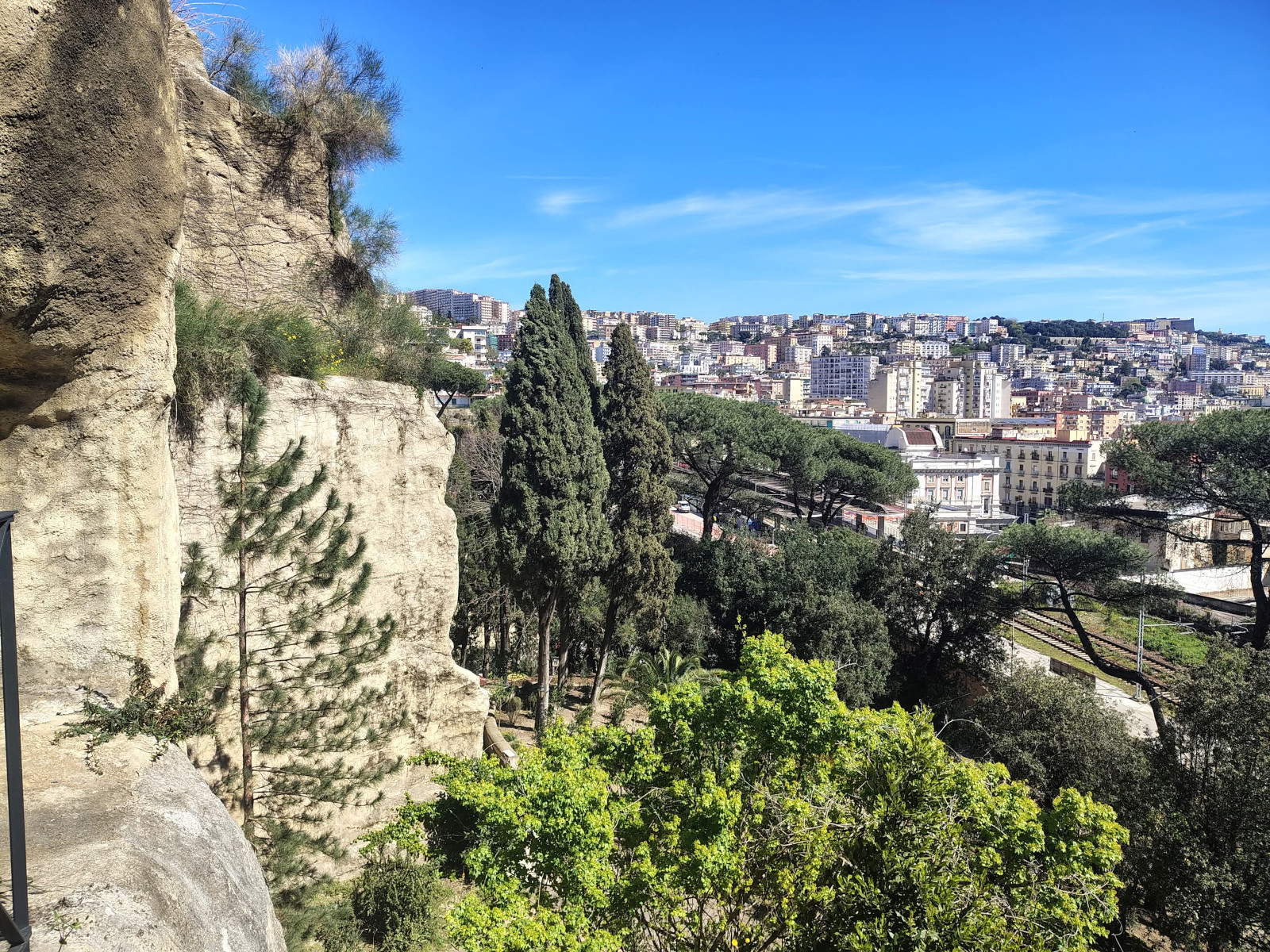
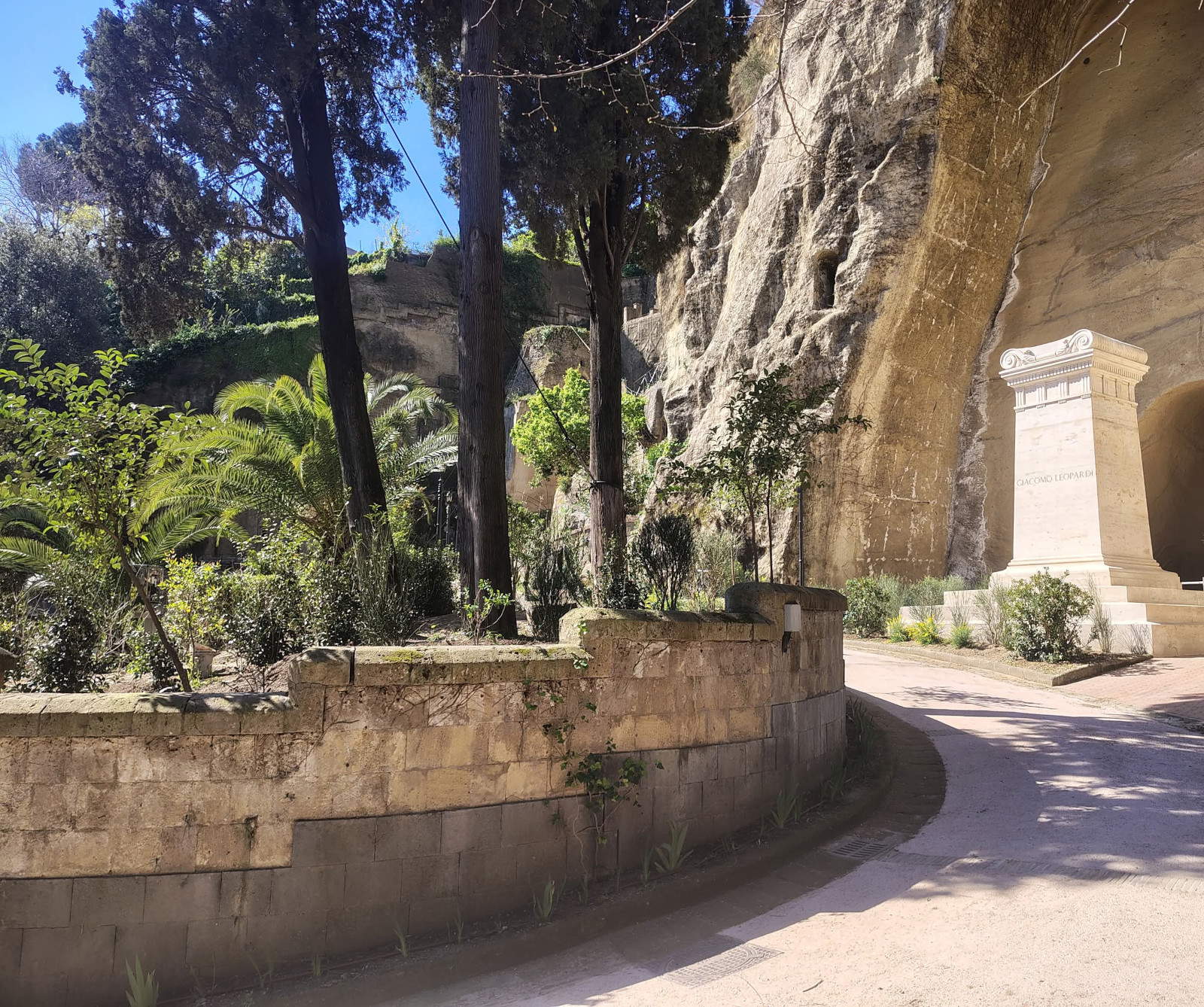
Thanks to PNRR funds dedicated to accessibility, the park underwent a major redevelopment that restored new legibility and harmony to one of the city’s most evocative places.
The work involved the redevelopment of the historic greenery, conducted following a rigorous philological reconstruction inspired by the nineteenth-century romantic garden, and the restoration of all the monumental elements, including Leopardi’s mausoleum, the bust of Virgil and the seventeenth-century aedicule commissioned by Don Pedro d’Aragona.
The new tour is divided into two itineraries: a botanical and a historical-archaeological one. The botanical route explores the relationship between plant landscape and poetry through symbolic plants related to Virgilian and Leopard imagery: the laurel of the Canzone ad Angelo Mai, the cypress of the Ricordanze and the broom of the eponymous lyric. The route has also been made accessible to the visually impaired, thanks to the tactile component developed in collaboration with SAAD University Service for Inclusion and Disability Activities of Suor Orsola Benincasa University as part of the “Campania tra le Mani” network. The historical-archaeological itinerary leads to the discovery of the park’s main monuments: from the tomb in opus reticulatum traditionally attributed to Virgil to Leopardi’s mausoleum, to the eastern entrance of the Crypta Neapolitana, which is the subject of a future enhancement project to make it accessible to the public.
Thanks to the project’s inclusion in the “Genius Loci” program, both routes offer multilingual supports, QR codes and an immersive 3D tour, the latter created in collaboration with the University “L’Orientale,” which also allows the entire Park to be explored virtually, including areas currently not accessible to all. The site’s “Digital Twin,” curated by Marco Giglio and developed with the help of the Centro Nazionale Studi Leopardiani and with the University of Naples “”L’Orientale," also allows for a complete experience even remotely.
Particularly relevant is the social aspect of the project. Thanks to the support of the social cooperative Il Tulipano Art Friendly, people with autism spectrum disorders will take part in welcoming and accompanying visitors. A project that makes the park not only a place of memory, but also a space for inclusion and active participation.
The redevelopment project was conceived by Massimo Osanna together with Luana Toniolo, with the coordination of Carla Bagnulo, park manager and RUP of the intervention on the historic green. The restoration of the greenery was supervised by architect Silvia Lacatena, with input from garden historian Maurizio Bartolini. The recovery of the stone structures was supervised by the technical staff of the Campania National Museums Regional Directorate, particularly Mery Moz and Maria Teresa Girfoglio, with support from Annalisa Arcara, Rosaria Garofalo and Maria Paola Campeglia, while the execution of the work was entrusted to Re.Am. srl.
The park will be open to the public every day, except Tuesdays, from 8:45 a.m. to 2:45 p.m. (last entrance 2:15 p.m.). Admission is free of charge.
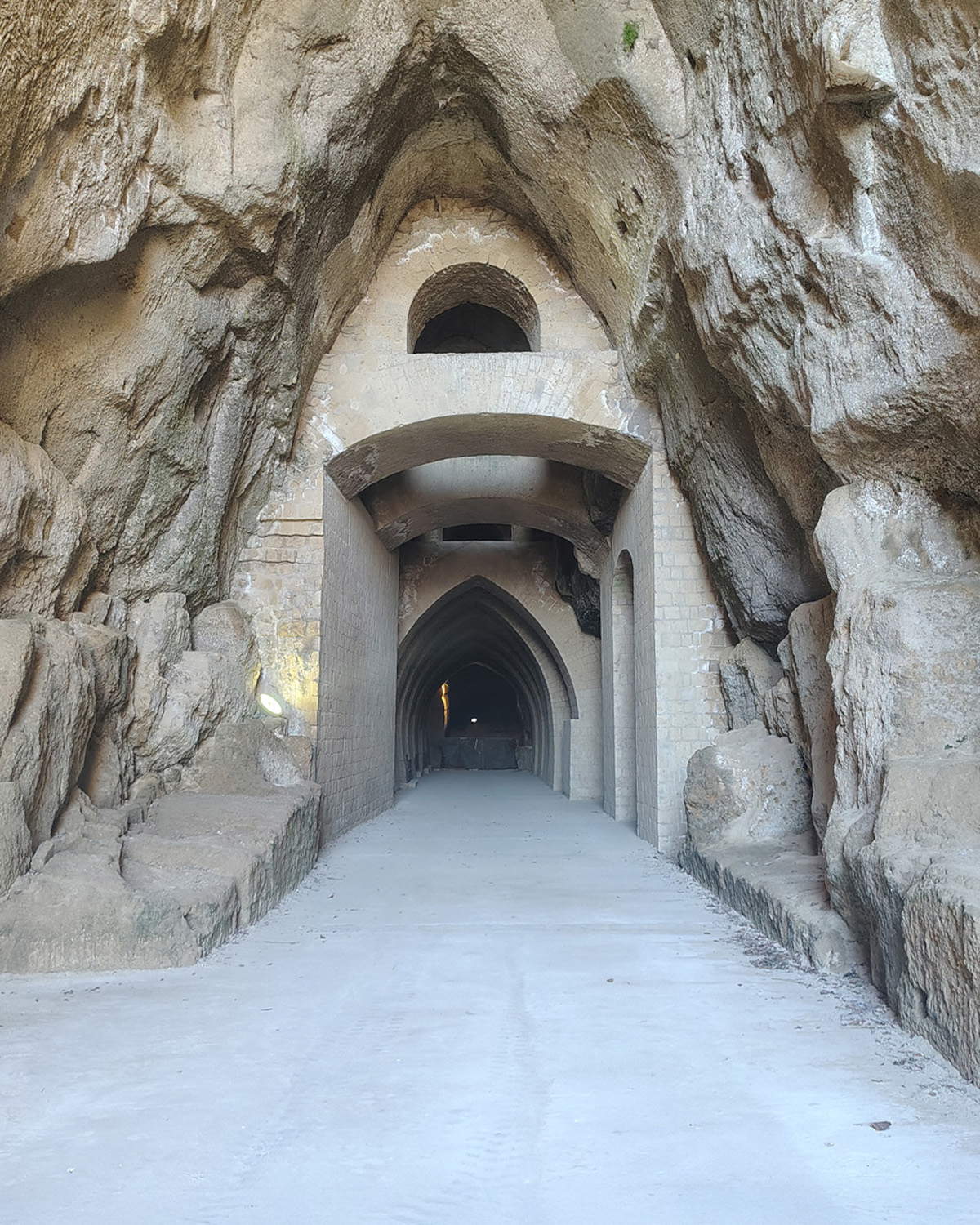
“The park is dedicated to two giants of our literature,” said Minister of Culture Alessandro Giuli, “and it is in one of the most important cities in Italy, Naples, which synthesizes in itself, in its millenary culture, all that is highest and noblest in Italian literature, history, tradition and culture. Reopening this place to the public means giving voice again to an ancient history, rediscovering and enhancing our cultural specificities and making them reverberate in our present. It means allowing anyone to do what can only be done in Italy, which is to read on the walls and in the landscapes the stories, biographies, philosophies, and the big and small events of our culture. The Ministry of Culture has been chorally committed to ensuring that this landscape, which is not only Naples’ but belongs to the entire national and European memory, is restored to its splendor and evocative power. The next step will be the restoration and reopening of the crypt to the public, thanks to 3 million euros in funding from the Cohesion and Development Fund.”
“The inauguration of the Park of the Tombs of Virgil and Leopardi,” commented Director General of Museums Massimo Osanna, “gives back to the city of Naples one of its most evocative and identity-creating places, through an enhancement project that combines conservation, accessibility, sustainability and memory, in continuity with the far-sighted vision of the great Superintendent Amedeo Maiuri, who launched a major landscape and archaeological restoration project right here in 1930. This park of rare beauty is not just a garden: it is a space in which archaeology, poetry, myth and nature dialogue. Two great figures of literature - Virgil and Leopardi - are celebrated here in a confrontation that spans the centuries. Thanks to PNRR funds, the Romantic garden, monuments were recovered and a new tour route was created, restoring harmony and legibility. The reopening will be an opportunity to make this place known to a wider public, finally making it part of the city’s lived heritage, available to all. In the heart of Naples, the Park now presents itself as an open-air museum, an oasis of contemplation and a living cultural garrison, capable of offering an authentic and inclusive experience. A tribute to the city, precisely in the year in which we celebrate the 2,500th anniversary of the founding of ancient Neapolis.”
“The new tour of the Park of the Tombs of Virgil and Leopardi,” said Naples Mayor Gaetano Manfredi, “is the result of a joint effort. With this site full of artistic, literary, cultural and naturalistic suggestions, an extraordinary piece of its history is returned to the city. The care of the accessibility of the itinerary - through multilingual panels, tactile paths for the visually impaired, digital tools - is part of a path of enhancement of a historic site that, since ancient times, has attracted the interest of many visitors. The restoration of the greenery and the recovery of the monumental part, from the bust of Virgil to the mausoleum of Leopardi, restore new life to the city’s history among other things in the year in which we celebrate the 2,500th anniversary of Neapolis. We are as an Administration also working on the redevelopment of Virgilian Park. I thank, for this, all those who have dedicated effort to the project on the tombs. It is a further link that strengthens the connection with Mantua and the network of Virgilian cities and rediscovers the poet Virgil’s incredible legacy in the city.”
Photo: General Directorate of Museums
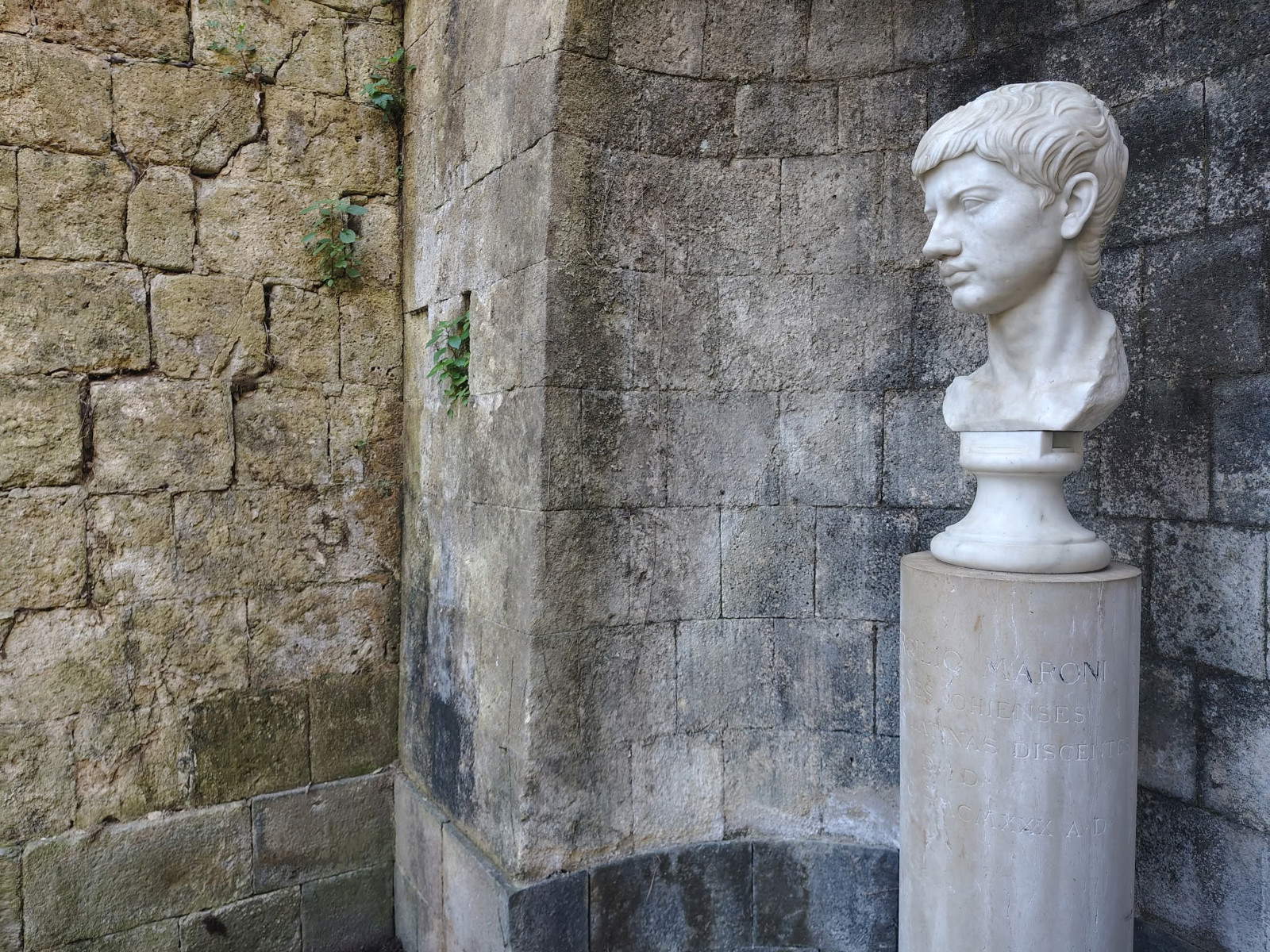
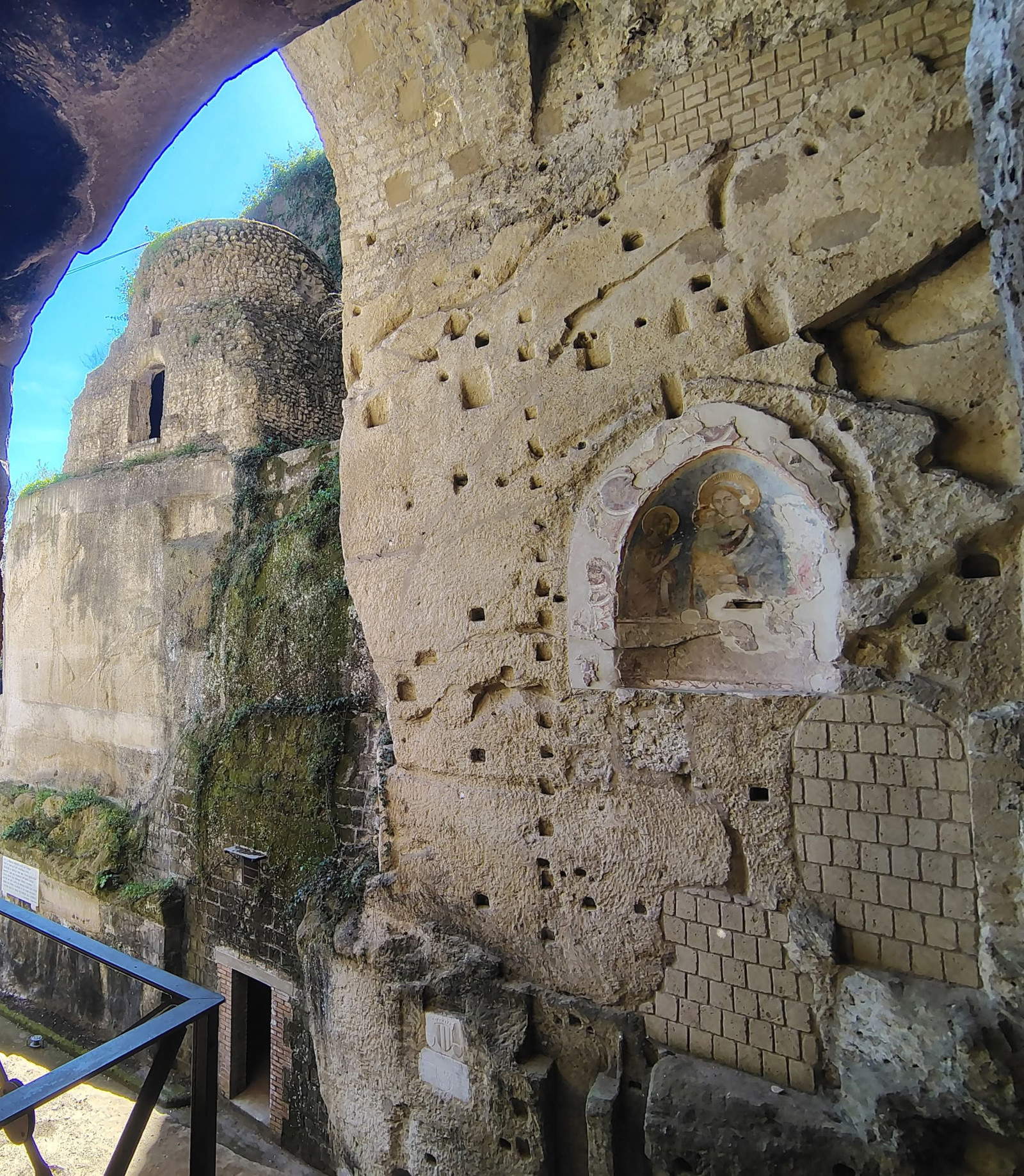
 |
| Naples, reopens redeveloped and restored Virgil and Leopardi Tomb Park |
Warning: the translation into English of the original Italian article was created using automatic tools. We undertake to review all articles, but we do not guarantee the total absence of inaccuracies in the translation due to the program. You can find the original by clicking on the ITA button. If you find any mistake,please contact us.